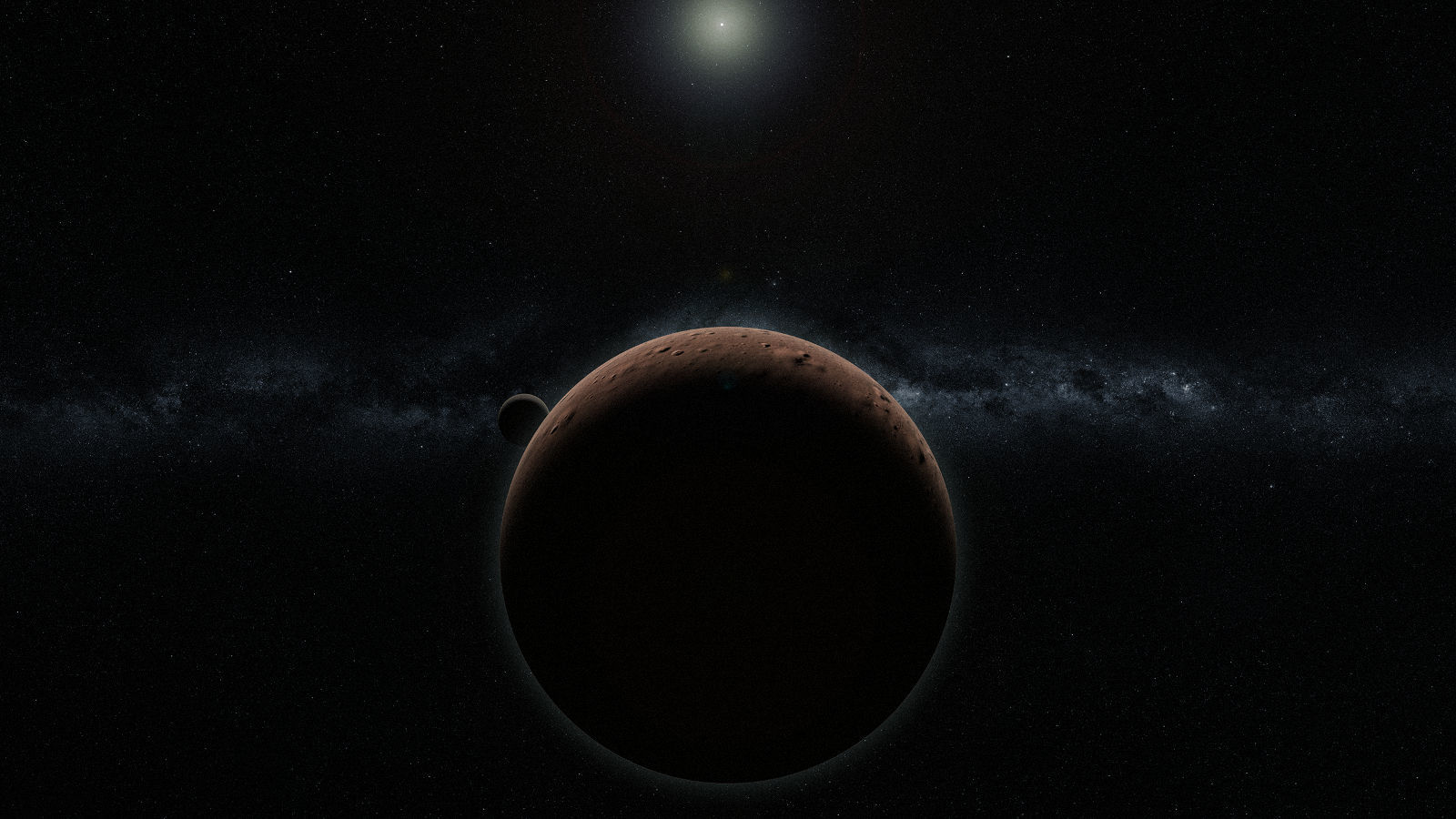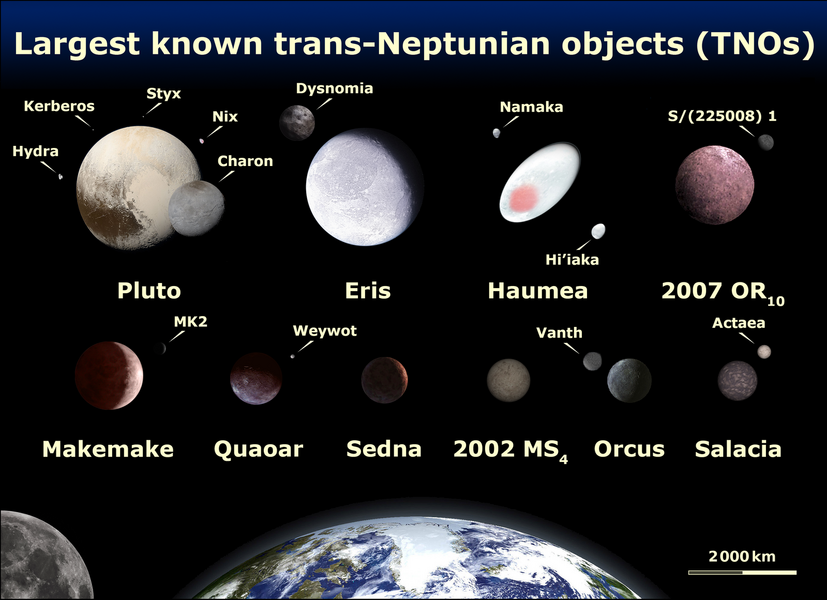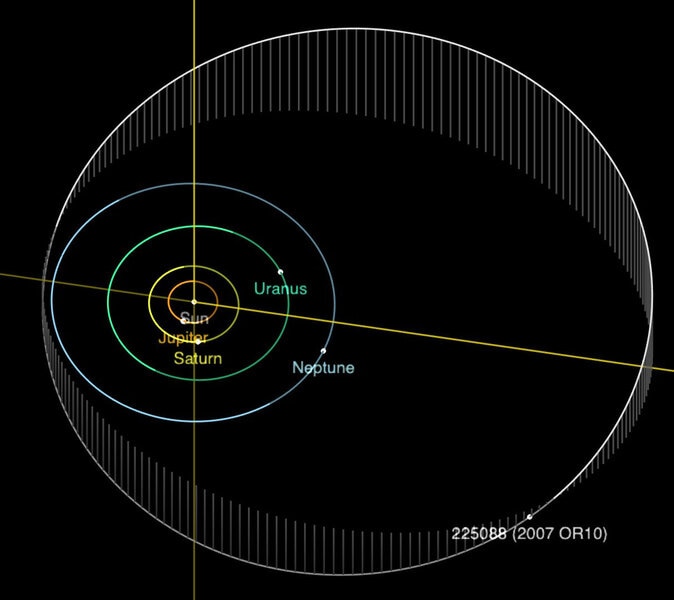Create a free profile to get unlimited access to exclusive videos, sweepstakes, and more!
Help astronomers name a Trans-Neptunian Object! (225088) 2007 OR10 just doesn't cut it

An embarrassing problem that’s come up in recent years is a weird one: naming astronomical objects. It used to be easy! There were just a handful of planets, a couple of dozen moons, and some asteroids (comets are named after their discoverers, so no prob there).
But then astronomers decided to make better telescopes and more sensitive cameras, and the next thing you know there are thousands of objects that need names! Catalog designations are fine for a while, but we’re human, and humans like to name things.
You can’t just do it willy-nilly though. There are rules to naming celestial beasties, enforced by the International Astronomical Union (or IAU to those in the know), and pretty much agreed-upon by the astronomical community at large. So, for example, new moons of Jupiter get named after known consorts or other mythological characters affiliated with Zeus/Jupiter (and a bunch of new moons still need names, in fact). Asteroids used to be named only after women (the first four were named after goddesses, starting a trend) but after tens of thousands were discovered they eased that restriction, and now they’ll name them after any beloved internet personality.
Out in deep space, beyond the orbit of Neptune, a population of objects was long theorized: icy worlds, with rock as well, distributed in a puffy disk that extends out for hundreds of billion of kilometers until it merges with a spherical cloud of such bodies. The inner disk has several components to it but overall we call it the Kuiper Belt (or the Edgeworth-Kuiper Belt), and the more spherical more distant collection is the Oort Cloud.
These rocky iceballs are so far away that the first Kuiper Belt Object (or KBO) wasn’t discovered until 1930 (and subsequently named Pluto), but it turns out that one is among the biggest (if not the biggest) of them, and also unusually reflective, making it easier to spot. The next one, 1992QB1, wasn’t discovered until (can you guess?) 1992, once technology allowed us to peer more deeply into the black.
Since then, thousands more have been found. Obviously, naming them all is an issue. Making it a bit more difficult is the rule that such objects (generically called Trans-Neptunian Objects) have to be named after mythological figures associated with creation. It can be from any culture, though, which opens things up quite a bit.
So for most TNOs, it can wait.
But there’s one that really can’t. And that’s 2007 OR10. What’s the deal with that one? It’s the largest known object in the solar system that still doesn’t have a name. At something like 1250 kilometers across, it’s about a third the diameter of our Moon, and far larger than many named moons in the solar system.
Not only that, but it was first found in 2007! It’s been a while for this to remain nameless out there in the cold. This cannot stand.
Astronomers Meg Schwamb, Mike Brown, and David Rabinowitz agree. As well they should: They discovered it!
So they’ve taken matters into their own hands. They’ve come up with three potential names to submit to the IAU, and they want the public to vote on which one they like best.
This is a cool idea! The names are Gonggong (from a Chinese water god), Holle (a Germanic goddess of many things, including agriculture), and Vili (a Norse deity who was the brother of Odin). Each have their charms, and each is somehow affiliated both with creation and, interestingly, the color red. That’s because 2007 OR10 is reddish in color, as are many objects out there; ultraviolet light from the Sun breaks down carbon-based molecules on the surface, which then build back up into complex molecules called tholins that tend to be reddish.
The website they’ve set up for this is really nice; it has a lot of background info on 2007 OR10, including how they found it, what it’s like physically, and a FAQ about it (for example, anticipating a common question, they note it’s far too faint to see without a powerful telescope, but then that’s why it wasn’t discovered until 2007!).
I’ll make the point that the astronomers aren’t looking for more name suggestions; they like these three, but can’t decide which one they should submit. So that’s up to you! And if the top candidate gets rejected by the IAU for some reason, they’ll submit the second choice.
I already voted. To avoid bias, I think I’ll keep mum on which one I liked best until after the votes are counted.
Speaking of which, there’s a deadline. The way this works is, after an object is discovered it gets a preliminary designation, and then it may takes weeks or months for it to get enough observations to nail down its orbit (it helps a lot if older images are found with the object in them; these are called pre-discovery images and can lengthen the baseline considerably). Once an orbit is determined well enough, it’s given a permanent number. At that point, the discoverers have 10 years to suggest a name.
2007 OR10 was given a number (225088) in November 2009, so they have until November of this year to submit a suggestion. To give themselves enough time, the voting will remain open until May 10, 2019 at 11:59 p.m. PDT (May 11 at 06:59 UTC).
Funny: I’ve had a note to myself for several months to write about this TNO, because of the very fact that it’s so large but doesn’t have a name. The thing is, I have a lot of notes to myself for article topics, so this one got kinda buried. I’m glad it’s come up now! It’s a cool topic, a fun way to get the public involved, and it’s another thing I can cross off my to-do list.
So get voting!
















